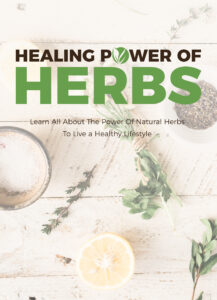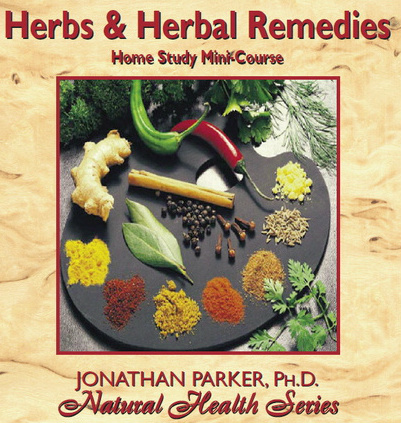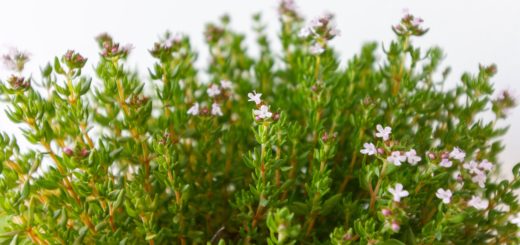Nasturtium Nirvana: Spiritual Flourish and Health Bloom

Before diving in, please note: This post is for informational purposes only. If you’d like to know more about how we approach topics, feel free to check out our friendly Disclaimer Page.
Hey there, amazing readers! 🖐️ Just a quick note: yes, we know there are a lot of ads here. Trust us, we get it—it’s not the prettiest look, but they help us keep this blog alive and kicking. Those pesky little ads cover the costs of all the behind-the-scenes magic, from hosting and tech stuff to creating content we hope you’ll love.
We’re committed to delivering quality posts, and your support (even just sticking around despite the ads) means everything to us. So, bear with us, and thanks for helping us keep the good vibes rolling. Now, on to the fun stuff! 😉
TRANSLATE BUTTON AT THE END OF THE ARTICLE
Introduction to the Power of Nasturtiums
Nasturtiums, scientifically known as Tropaeolum majus, are vibrant flowering plants that possess a myriad of benefits for both spiritual and physical well-being.
These beautiful annuals, native to South America, have long been admired for their captivating blooms and distinctive foliage.
However, their appeal extends far beyond their aesthetic qualities.
With their rich history, diverse range of varieties, and numerous health benefits, nasturtiums have become a staple in gardens, kitchens, and traditional medicine practices around the world.
Historical Significance and Cultural Importance
Nasturtiums have a fascinating historical significance and cultural importance that dates back centuries.
The Incas and other indigenous tribes in South America revered these plants for their medicinal properties and believed that they possessed spiritual powers.
The vibrant colors of nasturtiums were believed to symbolize vitality and were often incorporated into religious ceremonies.
The plant eventually made its way to Europe in the 16th century, where it gained popularity as an ornamental plant and a flavorful addition to culinary dishes.
Today, nasturtiums continue to hold a special place in various cultures, celebrated for their unique attributes.
Exploring the Different Varieties of Nasturtiums
Nasturtiums offer a diverse range of varieties, each with its own unique characteristics and qualities.
From the classic ‘Alaska’ variety with its variegated leaves and vibrant flowers, to the trailing ‘Empress of India’ with its deep red blooms, there is a nasturtium variety to suit every gardener’s preference.
Other popular varieties include the ‘Whirlybird’ with its double flowers, the compact ‘Jewel Mix’ with its intense colors, and the stunning ‘Moonlight’ with its pale yellow blossoms.
By exploring the different varieties, gardeners can create a truly enchanting and personalized nasturtium display.
Benefits of Nasturtiums for Mental Well-being
Beyond their visual appeal, nasturtiums have been associated with numerous benefits for mental well-being.
The vibrant colors of these flowers have a positive impact on mood and can uplift spirits.
Their presence in gardens and indoor spaces creates a serene and tranquil environment, promoting relaxation and reducing stress levels.
Nasturtiums are also known for their invigorating fragrance, which can have a calming effect on the mind.
For those seeking a spiritual connection, the presence of nasturtiums can create a sense of harmony and awaken the senses.
How Nasturtiums Aid in Physical Health
In addition to their mental health benefits, nasturtiums also offer various advantages for physical well-being.
These plants are rich in vitamins A, C, and D, as well as essential minerals like iron, calcium, and phosphorus.
Consuming nasturtium leaves and flowers can boost the immune system, improve digestion, and promote healthy skin.
Additionally, nasturtiums possess antimicrobial properties that help fight off bacteria and viruses.
Their natural compounds also act as an expectorant, making them beneficial for respiratory health.
By incorporating nasturtiums into one’s diet, individuals can support their overall physical well-being.
Growing and Caring for Nasturtiums at Home
Nasturtiums are relatively easy to grow and care for, making them an excellent choice for both novice and experienced gardeners.
These plants thrive in well-draining soil and prefer full sun or partial shade.
Nasturtium seeds can be directly sown into the soil once the danger of frost has passed.
Regular watering and occasional fertilization will promote healthy growth and vibrant blooms.
It is important to note that nasturtiums are known to attract aphids, so regularly checking for pests and using organic pest control methods is recommended.
With proper care, nasturtiums can flourish and add a touch of natural beauty to any garden.
Incorporating Nasturtiums into Culinary Delights
Nasturtiums are not only visually appealing but also offer a unique and delicious flavor that can enhance culinary delights.
Discover the "Healing Power of Herbs" 🌿
Both the leaves and flowers of nasturtiums are edible and can be used in a variety of dishes.
The leaves have a peppery taste, similar to watercress, and can be added to salads, sandwiches, or used as a garnish.
The flowers, with their slightly sweet and spicy flavor, make a stunning addition to salads, desserts, and even infused vinegars.
Nasturtiums also produce edible seeds, known as “poor man’s capers,” which can be pickled and used as a flavorful condiment.
By incorporating nasturtiums into their cooking, individuals can elevate their culinary creations with a burst of color and flavor.
Nasturtiums in Traditional Medicine Practices
Nasturtiums have a long history of use in traditional medicine practices.
The plant’s leaves and flowers contain compounds that have antibacterial, antifungal, and anti-inflammatory properties.
These qualities make nasturtiums effective in treating various ailments, including respiratory infections, urinary tract infections, and skin conditions.
Additionally, nasturtiums possess diuretic properties, aiding in the elimination of toxins from the body.
Traditional medicine practitioners often utilize nasturtiums in the form of teas, tinctures, or poultices for their healing properties.
However, it is important to consult with a healthcare professional before using nasturtiums for medicinal purposes.
Nasturtiums as Natural Pest Control in Gardens
Beyond their aesthetic and health benefits, nasturtiums also serve as natural pest control in gardens.
These plants attract aphids, which are notorious garden pests, and act as a trap crop, luring the insects away from other plants.
This makes nasturtiums an effective companion plant for vegetables and fruits, as they help protect them from aphid infestations.
Additionally, nasturtiums release a chemical compound that acts as a natural deterrent for other pests, such as whiteflies and cucumber beetles.
By strategically planting nasturtiums in the garden, gardeners can promote a healthy and pest-resistant environment.
Creative DIY Projects with Nasturtiums
Nasturtiums offer endless possibilities for creative do-it-yourself (DIY) projects.
The vibrant and varied colors of the flowers make them perfect for creating natural dyes for fabrics.
By boiling the flowers, individuals can extract pigments that can be used to color clothing, linens, or even paper.
Nasturtiums can also be used to create homemade beauty products, such as infused oils or floral waters, which can be used for skincare or in bath products.
Additionally, the leaves and flowers of nasturtiums can be pressed and used for decorative purposes, such as in homemade greeting cards or framed artwork.
The versatility of nasturtiums makes them a wonderful addition to any DIY enthusiast’s repertoire.
Conclusion: Embracing the Beauty of Nasturtiums
Nasturtiums, with their spiritual flourish and health bloom, offer a multitude of benefits for both the mind and body.
From their historical significance and cultural importance to their diverse varieties and physical health advantages, these plants have captivated people across the globe.
Whether incorporated into gardens, culinary creations, traditional medicine practices, or creative DIY projects, nasturtiums bring a touch of natural beauty and vitality to every aspect of life.
By embracing the power of nasturtiums, individuals can enhance their well-being, connect with nature, and revel in the enchanting world of these vibrant and versatile plants.

The Enlightenment Journey is a remarkable collection of writings authored by a distinguished group of experts in the fields of spirituality, new age, and esoteric knowledge.
This anthology features a diverse assembly of well-experienced authors who bring their profound insights and credible perspectives to the forefront.
Each contributor possesses a wealth of knowledge and wisdom, making them authorities in their respective domains.
Together, they offer readers a transformative journey into the realms of spiritual growth, self-discovery, and esoteric enlightenment.
The Enlightenment Journey is a testament to the collective expertise of these luminaries, providing readers with a rich tapestry of ideas and information to illuminate their spiritual path.
Our Diverse Expertise 🌟
While our primary focus is on spirituality and esotericism, we are equally passionate about exploring a wide range of other topics and niches 🌍📚. Our experienced team is dedicated to delivering high-quality, informative content across various subjects ✨.
To ensure we provide the most accurate and valuable insights, we collaborate with trusted experts in their respective domains 🧑🏫👩🏫. This allows us to offer well-rounded perspectives and knowledge to our readers.
Discover the "Healing Power of Herbs" 🌿
Our blog originally focused on spirituality and metaphysics, but we’ve since expanded to cover a wide range of niches. Don’t worry—we continue to publish a lot of articles on spirituality! Frequently visit our blog to explore our diverse content and stay tuned for more insightful reads.
Discover the "Healing Power of Herbs" 🌿
Unlock the ancient wisdom of herbal remedies with this comprehensive guide! Perfect for beginners and enthusiasts alike, this e-book dives into the powerful benefits of herbs for health, wellness, and natural healing.
Inside, you’ll find:
Easy-to-follow recipes for teas, tinctures, and remedies.
A guide to the most effective herbs for common ailments.
Tips on growing and storing your own herbs.
Transform your health naturally and embrace the healing power of nature. 🌱 Start your journey today!







